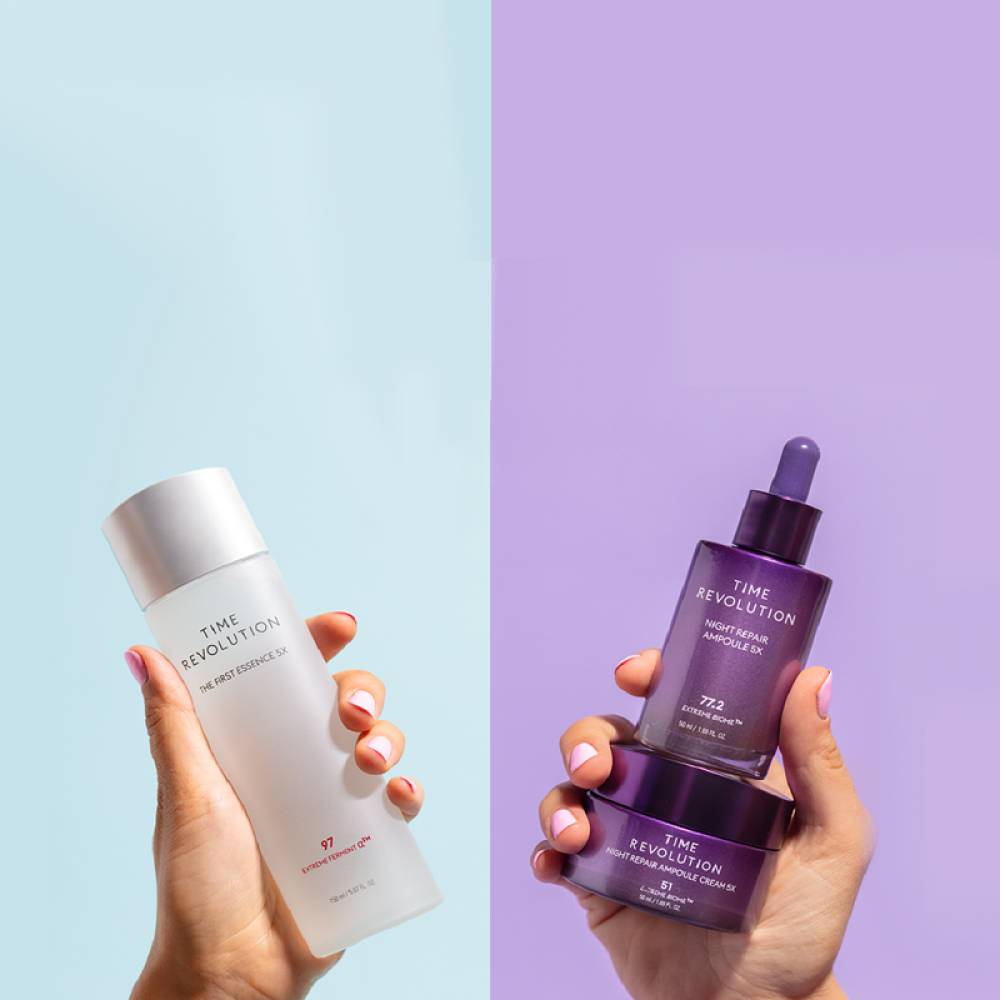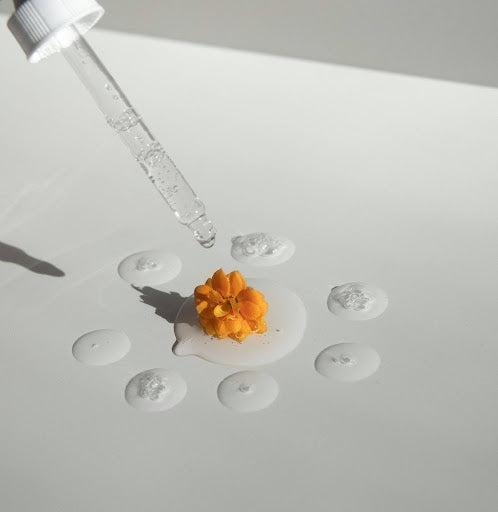When it comes to skincare, there are numerous products available that claim to improve the texture and appearance of your skin. Among these products, two popular choices are serums and moisturizers. While both are essential for maintaining healthy skin, it may be puzzling to determine the correct order of application. In this article, we will delve into the world of skincare and answer the age-old question: Serum or moisturizer, which comes first?
Understanding the Basics: Serum and Moisturizer
To decipher the correct application order, it's crucial to comprehend the basic functions and characteristics of serums and moisturizers.
When it comes to skincare, serums and moisturizers play distinct yet complementary roles in maintaining healthy and radiant skin. While both are essential components of a skincare routine, understanding their unique properties can help you maximize their benefits.
What is a Serum?
A serum is a lightweight, gel-like formula that contains a high concentration of active ingredients. These potent ingredients are designed to target specific skin concerns, such as fine lines, dark spots, or uneven texture. Serums are formulated with smaller molecules that penetrate deeply into the skin, delivering powerful nutrients and antioxidants.
One of the key advantages of serums is their ability to address specific skin issues effectively. Whether you're looking to brighten dull skin, reduce inflammation, or boost collagen production, there is a serum tailored to meet your skincare needs.
What is a Moisturizer?
On the other hand, a moisturizer is a thicker, cream-based product that aims to hydrate the skin and lock in moisture. Moisturizers act as a protective barrier, preventing water loss and maintaining the skin's natural moisture balance. They are essential for keeping the skin soft, supple, and nourished.
Moisturizers come in various formulations to cater to different skin types, from lightweight lotions for oily skin to rich creams for dry skin. In addition to hydrating ingredients, moisturizers often contain antioxidants, vitamins, and soothing agents to promote overall skin health.
The Role of Serum in Skincare
Now that we understand the basics, let's explore the benefits of using a serum in your skincare routine.
Serums have become a staple in many skincare routines due to their potent formulations and targeted benefits. These lightweight products are designed to deliver a high concentration of active ingredients deep into the skin, making them highly effective in addressing specific skin concerns.
Benefits of Using a Serum
Serums contain a high concentration of active ingredients, such as antioxidants, vitamins, peptides, and hyaluronic acid. These potent ingredients target specific skin concerns and provide various benefits, including:
- Reduced appearance of fine lines and wrinkles
- Brighter and more even skin tone
- Boosted hydration and plumpness
- Increased collagen production
- Enhanced skin elasticity
Furthermore, serums are formulated to penetrate the skin more effectively than traditional moisturizers, allowing for better absorption of key nutrients and active ingredients. This means that serums can deliver results more quickly and visibly, making them a valuable addition to any skincare regimen.
Different Types of Serums
There is a wide range of serums available on the market, each catering to a specific skin concern or type. Some popular types of serums include:
- Anti-aging serums
- Hydrating serums
- Brightening serums
- Acne-fighting serums
- Sensitive skin serums
Whether you're looking to combat signs of aging, boost hydration, or tackle skin discoloration, there is a serum out there tailored to meet your specific needs. It's important to choose a serum that addresses your individual skin concerns to maximize its benefits and achieve healthy, radiant skin.
The Importance of Moisturizer
While serums provide targeted treatment for specific skin concerns, moisturizers play a crucial role in overall skin health. Moisturizers are a fundamental part of any skincare routine, as they help to maintain the skin's hydration levels and protect it from external aggressors.
Properly hydrated skin is essential for maintaining a healthy skin barrier, which serves as the body's first line of defense against environmental toxins and pathogens. By keeping the skin barrier intact and functioning optimally, moisturizers help to prevent issues such as dryness, sensitivity, and inflammation.
Why Moisturizer is Essential
Moisturizers are formulated to provide the skin with hydration and prevent moisture loss. Here are some key benefits of using a moisturizer:
- Improved skin barrier function
- Reduced dryness and flakiness
- Protection against environmental stressors
- Enhanced skin texture and smoothness
- Prevention of premature aging
Regular use of a moisturizer can also help to balance the skin's oil production, making it an essential step for both dry and oily skin types. Additionally, moisturizers can create a protective layer on the skin's surface, locking in moisture and allowing for better absorption of other skincare products.
Various Kinds of Moisturizers
Just like serums, there are various types of moisturizers available to address different skin needs. Some common types include:
- Daytime moisturizers with SPF
- Night creams
- Lightweight gels for oily skin
- Rich creams for dry skin
- Oil-free moisturizers for acne-prone skin
Choosing the right moisturizer for your skin type and concerns is crucial for achieving optimal results. Whether you prefer a lightweight lotion for daytime use or a rich cream for intense hydration overnight, incorporating a moisturizer into your daily skincare routine can make a significant difference in the health and appearance of your skin.
The Order of Application: Serum or Moisturizer First?
Now that we have a better understanding of serums and moisturizers, let's determine the correct order of application.
When it comes to skincare routines, the order of application can make a significant difference in how effective the products are. While there are varying opinions on whether serum or moisturizer should come first, it ultimately depends on your skin type and concerns.
Applying Serum Before Moisturizer
Many skincare professionals recommend applying serums before moisturizers. This order allows the active ingredients in the serum to penetrate the skin more effectively. The lightweight consistency of serums ensures better absorption, delivering their potent ingredients directly to the target areas.
Furthermore, serums are formulated with smaller molecules that can penetrate deeply into the skin, targeting specific concerns such as fine lines, wrinkles, or hyperpigmentation. By applying the serum first, you are maximizing its benefits and allowing it to work its magic unhindered by heavier creams.
Applying Moisturizer Before Serum
Contrary to popular belief, applying moisturizer before serum can also be beneficial. By using a moisturizer first, you create a protective barrier on your skin, locking in hydration and preventing the serum from evaporating. This method is particularly useful for individuals with extremely dry or sensitive skin.
Additionally, if you have a rich, nourishing moisturizer that addresses your skin's hydration needs, applying it before the serum can help create a smooth canvas for the serum to glide on. This can be especially helpful for those with mature skin or during colder months when extra hydration is essential.
Factors Influencing the Order of Application
There are several factors to consider when deciding whether to apply serum or moisturizer first. Let's explore these factors in more detail.
When it comes to skincare, understanding your skin type is essential in determining the order of application. Your skin type plays a crucial role in how products interact with your skin. For individuals with oily or acne-prone skin, applying serum before a moisturizer can help ensure the lightweight texture of the serum is absorbed effectively without feeling greasy. On the other hand, if you have dry or sensitive skin, applying moisturizer before serum can provide an extra layer of hydration and protection, helping to lock in moisture and prevent any potential irritation.
Skin Type Considerations
Your skin type plays a crucial role in determining the order of application. For individuals with oily or acne-prone skin, applying serum before moisturizer can help ensure the lightweight texture of the serum is absorbed effectively. However, if you have dry or sensitive skin, applying moisturizer before serum can provide an extra layer of protection and prevent any potential irritation.
Another important factor to consider is the specific needs of your skin. If you have concerns such as hyperpigmentation, fine lines, or acne, you may want to prioritize the application of a targeted treatment, such as a serum, to address these issues before layering on a moisturizer.
Product Formulation Factors
The formulation of the serum and moisturizer also influences the order of application. Some serums are designed to have a more occlusive texture, which can hinder the absorption of subsequent products. In this case, it may be more effective to apply the serum before moisturizer to ensure optimal penetration of the active ingredients.
Consider the consistency and ingredients of the products you are using. If your serum has a watery texture and your moisturizer is rich and creamy, applying the serum first allows it to penetrate the skin before sealing it in with the thicker moisturizer.
Ultimately, the order of application should be based on your individual preferences and skin type. Remember that consistency is key in any skincare routine, so choose an order that works best for you and stick to it.
Conclusion
With the abundance of skincare products available, understanding the correct order of application is essential. While there is no one-size-fits-all answer, considering factors such as skin type and product formulation can help you decide whether to apply serum or moisturizer first.
Both serums and moisturizers play unique roles in maintaining healthy, hydrated skin. By incorporating these products into your skincare routine, you can achieve a more radiant and youthful complexion. Experiment with different orders of application, observe how your skin responds, and adjust accordingly. Happy skincare journey!








